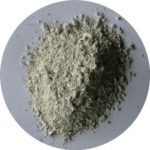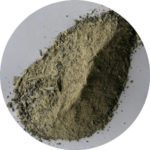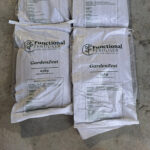PW Burton
The pasture on New Zealand farms has long been famous for its clover/grass mixture, and much of our agricultural economy has succeeded on it.
But somewhere along the line the scientific reasoning behind it has slipped from memory, and along with that seems to have disappeared the idea that pasture is permanent. These days we not only have rotational grazing, but rotational pasture renewal as well. This practice not only disturbs the soil life at regular intervals, but comes with considerable cost as well.
Why is everyone doing this?
It’s not the pasture itself that seems to require renewal, it’s the way farmers are treating it, particularly in the first and second seasons. Impatience with nature and too much stock are often to blame. Heavy grazing at frequent intervals, and treading by heavy feet can mean that the root mass (which provides the food for the green stuff) never gets a proper chance to develop and grow sufficiently to produce the expected growth.
We need to get back to the idea that pasture is ‘permanent’, and that the grasses and clovers we use each have roles to play in their appropriate seasons. It’s knowing the right growth point to graze, and the right timing of rotations that can make a considerable difference in total dry matter grown and the quality of that in relation to animal performance.
These days only about the top 5% of pastoral farmers are getting it right, and remaining profitable, whatever prices and the weather throw at us.
It is sixty years since rotational grazing was widely embraced, and the principles behind that evolution remain as valid now as then.
A shift from set stocking, to allocating animals only sufficient pasture for 24 hours provided a lift in total pasture production of around 30%. That provided an extra 2-3 tonne/ha for those growing 8 –10 tonne of dry matter annually, a common production figure then.
There was an initial cost in extra fencing and the installation of electric fence units, along with more time spent allocating sufficient feed on a daily basis. However, it revolutionised our farming industry.
Nowadays there is a fashion for having too many animals calving or lambing early, before the pasture is ready, and having grazing intervals based more on convenience than science. Filling the gaps with bought in supplement may seem to work, but there’s no profit in it.
Our clover/grass permanent pastures were deliberately and carefully developed to suit our climatic conditions. Although clover does grow elsewhere in the world, our relatively mild conditions and reliable rainfall for most regions still provide us with a real advantage.
Grasses grow more strongly when soil temperatures are less than 20 degC, from late autumn until early November. Summer is the time they naturally seed and there is little that can be done to change that process.
Clovers remain less competitve during late autumn, winter, and early spring, but will readily dominate pastures from mid-November until soil temperatures and sunlight hours decline in late March.
During this time, provided soil nutrient conditions are suitable, they produce more total feed, containing higher energy than grasses. The feed contains significantly more calcium and is more digestible, the reasons for measurably better weight gain of lambs and other young animals, and milk yield from dairy cows.
To maximise these advantages it necessary to have a sound grazing regime, and a soil fertility programme that allows natural systems to operate to best effect. While some nutrient inputs can appear to make a rapid change to pasture composition and performance during summer, the focus now should be on ensuring growing conditions for winter and next spring are established, recognizing the current strengths of clover and the growth spurt of grasses when the soil cools.
Where possible, this means maintaining a genuine 30 day interval between grazings until autumn rain arrives, with animals staying in an area for no more than three days before being removed elsewhere.
Autumn is the best time to apply a comprehensive nutrient package containing all required major and minor elements necessary to maximise growth over winter and early spring.
Functional Fertiliser has a newly commissioned store at Gemmells Crossing near Oamaru to cater for the steady increase in its business in the area, complementing the existing network of stores throughout the South Island.




